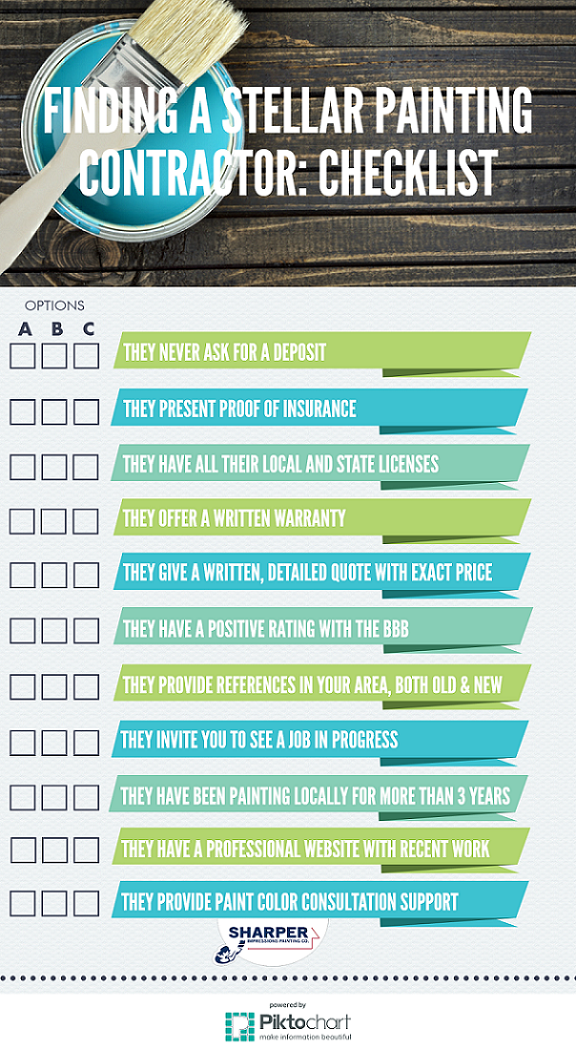Discover Just How Seasonal Impacts Can Impact The Effectiveness Of Industrial Outside Paint And Figure Out The Most Positive Times To Ensure Sturdy Outcomes For Your Task
Discover Just How Seasonal Impacts Can Impact The Effectiveness Of Industrial Outside Paint And Figure Out The Most Positive Times To Ensure Sturdy Outcomes For Your Task
Blog Article
mouse click the following web site Created By-Carlson Chaney
When you're preparing a business exterior paint task, seasonal elements can make or damage your results. You'll want to think about exactly how temperature level and moisture influence paint application and drying times. Choosing the right season can ensure your paint sticks correctly and lasts longer. But which periods are truly the most effective for this sort of work? Let's explore the key elements that can impact your task's success.
The Impact of Temperature Level on Paint Application
When you're planning a business exterior paint project, the temperature can considerably influence just how well the paint adheres and dries.
Ideally, you intend to paint when temperature levels range between 50 ° F and 85 ° F. If it's as well cold, the paint might not cure appropriately, bring about concerns like peeling or breaking.
On the other hand, if it's also hot, the paint can dry too rapidly, protecting against correct bond and resulting in an irregular finish.
You need to additionally consider the time of day; morning or late afternoon provides cooler temperature levels, which can be a lot more beneficial.
Constantly examine the manufacturer's suggestions for the particular paint you're using, as they typically supply support on the suitable temperature level array for optimum outcomes.
Humidity and Its Effect on Drying Times
Temperature level isn't the only environmental aspect that affects your industrial exterior paint job; humidity plays a significant role also. High moisture degrees can decrease drying out times substantially, impacting the general quality of your paint job.
When the air is filled with wetness, the paint takes longer to cure, which can cause problems like poor bond and a greater threat of mildew growth. If you're painting on a particularly damp day, be planned for extended wait times between layers.
It's crucial to keep an eye on regional weather conditions and plan as necessary. Ideally, go for moisture degrees between 40% and 70% for optimum drying.
Keeping these factors in mind ensures your project stays on track and provides an enduring surface.
Best Seasons for Commercial Exterior Painting Projects
What's the most effective time of year for your business external painting projects?
Spring and early autumn are usually your best choices. During house painters near me exterior , temperature levels are light, and humidity levels are usually lower, creating suitable conditions for paint application and drying.
Prevent summer season's intense heat, which can create paint to completely dry also quickly, bring about poor bond and coating. Similarly, winter's chilly temperature levels can impede correct drying out and curing, taking the chance of the longevity of your paint task.
Go for days with temperatures in between 50 ° F and 85 ° F for optimal outcomes. Bear in mind to inspect the regional weather forecast for rainfall, as damp problems can destroy your job.
Preparation around these factors ensures your painting job runs efficiently and lasts longer.
Conclusion
Finally, preparing your commercial exterior paint tasks around seasonal considerations can make a significant distinction in the outcome. By scheduling work throughout the optimal temperatures and humidity degrees, you'll guarantee better bond and drying out times. Keep in mind to watch on local weather prediction and select the correct time of year-- springtime and early autumn are your best options. Taking these actions will certainly help you achieve a long lasting and expert surface that lasts.
